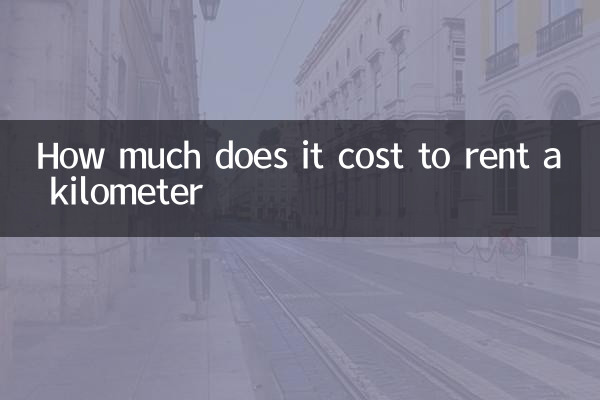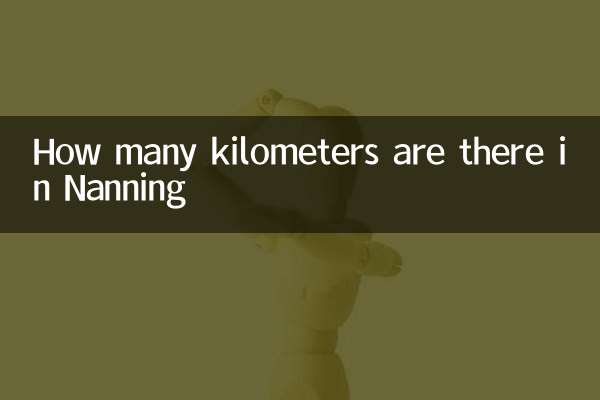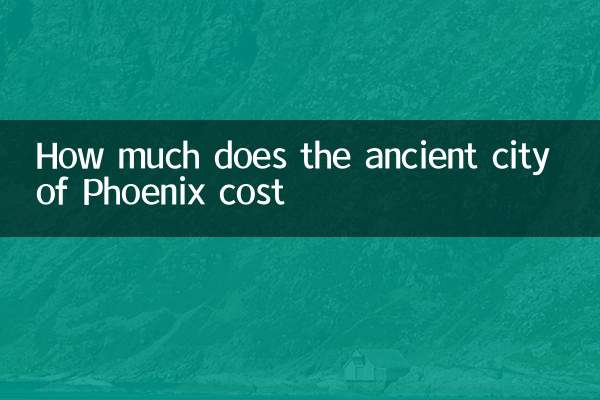How much does it cost to rent for one kilometer: Hot topics and data analysis on the entire network in the past 10 days
Recently, "How much does it cost to rent for one kilometer" has become a hot topic, especially the price changes in the online car-hailing, shared bicycles and logistics and transportation industries have sparked widespread discussion. The following is a structured analysis of hot content on the entire network in the past 10 days, covering price trends, industry comparisons and user feedback.
1. Price comparison of mainstream travel methods per kilometer

| Travel method | Daytime price (yuan/km) | Night price (yuan/km) | Price increase during peak hours |
|---|---|---|---|
| Online car-hailing (economic) | 2.5-3.2 | 3.0-3.8 | 20%-50% |
| taxi | 2.8-3.5 | 3.3-4.0 | 15%-30% |
| Shared electric motorcycle | 1.5-2.0 | Same price | none |
| City freight (small van) | 4.0-6.0 | 5.0-7.0 | 30%-80% |
2. The top 5 cities with regional price differences
| City | Average online car-hailing price (yuan/km) | Average taxi price (yuan/km) | Reasons for price fluctuations |
|---|---|---|---|
| Beijing | 3.6 | 3.8 | Fuel surcharge adjustment |
| Shanghai | 3.4 | 3.6 | Tight transportation capacity |
| Guangzhou | 3.0 | 3.3 | Fierce competition |
| Shenzhen | 3.2 | 3.5 | High demand at night |
| Chengdu | 2.8 | 3.0 | Subsidy activities |
3. Analysis of hot events
1.Impact of subsidies for new energy vehicles: Taxi companies in many places announced that they planned to raise the freight rate per kilometer by 0.3-0.5 yuan due to the cancellation of the national subsidy, which has caused consumers to worry about travel costs.
2.Dynamic price adjustment dispute: A platform was exposed that the price of online car-hailing in rainy days soared to 5.8 yuan/km, and the number of readings on related topics exceeded 200 million times. Regulatory authorities have intervened in the investigation.
3."Invisible Charge" for shared bicycles: Some cities have a starting price that includes 20 minutes but is actually billed at 1.5 yuan/km + 0.5 yuan/minute, and the price is said to be opaque.
4. Consumer behavior survey data
| Price sensitive range | User proportion | Main options |
|---|---|---|
| ≤2 yuan/km | 18% | Public Transportation/Cycling Share |
| 2-3 yuan/km | 47% | Online car-hailing carpooling |
| 3-4 yuan/km | 28% | Taxi/Special Car |
| ≥4 yuan/km | 7% | Business vehicles/emergency demand |
5. Future price trend forecast
1.Seasonal fluctuations: The peak summer tourism season is approaching, and freight rates per kilometer in popular cities are expected to rise by 10%-15%.
2.Technology-driven: The expansion of the pilot program of autonomous driving may reduce the cost of online ride-hailing, but it still faces high R&D investment sharing in the short term.
3.Policy factors: Many places plan to introduce upper limit regulations on freight rates, which may curb the phenomenon of price surge in extreme weather.
The current market is characterized by "short-distance sharing, mid-distance online booking, and long-distance standardization". It is recommended that consumers query real-time prices through price comparison platforms and use a combination of travel methods to control costs.

check the details

check the details